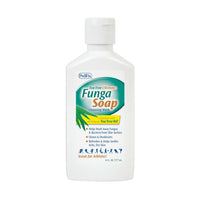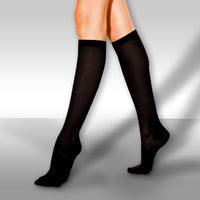Varicose Veins
- Summary
- Symptoms
- Read More
Summary
Varicose veins are very common, with estimates ranging as high as 15 to 20% of the general population. Varicose veins are more common in women. In patients over the age of 50 years, varicose veins are estimated to be present in as high as 50% of the general population. The increased incidence of varicose veins with age is due to the loss of muscle support in the leg as we age resulting in loss of muscle tone and less support for the vein. The superficial veins of the leg are particularly predisposed to increased pressure due to lack of muscular support on all sides of their walls.
Symptoms
- Deep blue and red visible veins on the leg and foot
- Often no pain described
- If painful, pain increases with duration of time spent standing
- Swelling of the distal 1/3 of the lower leg
- Changes in the skin causing peeling and redness
- Ulceration of the medial ankle
Description
The venous system of the leg consists of three types of veins: superficial, perforating, and deep. Superficial and deep veins are lined with valves. Valves are  small cups that allow blood to flow in one direction (uni-directional). Venous flow begins in the distal, superficial veins, moves into the perforating veins and finally into the deep veins with return of the venous circulation to the heart. The muscles of the legs aid in compressing the veins of the leg, pushing the blood through the veins to the heart. Defects in the valves allow blood to flow in a reverse direction, creating back pressure on the wall of the vein. This back pressure is called venous hypertension. If venous hypertension is sufficient to damage the supportive wall of the vein, the vein will change in shape to become tortuous and dilated, creating what we know as a varicose vein. Telangiectasia are very similar to varicose veins and are the small visible superficial veins often referred to as spider veins.
small cups that allow blood to flow in one direction (uni-directional). Venous flow begins in the distal, superficial veins, moves into the perforating veins and finally into the deep veins with return of the venous circulation to the heart. The muscles of the legs aid in compressing the veins of the leg, pushing the blood through the veins to the heart. Defects in the valves allow blood to flow in a reverse direction, creating back pressure on the wall of the vein. This back pressure is called venous hypertension. If venous hypertension is sufficient to damage the supportive wall of the vein, the vein will change in shape to become tortuous and dilated, creating what we know as a varicose vein. Telangiectasia are very similar to varicose veins and are the small visible superficial veins often referred to as spider veins.
Varicose veins and telangiectasia account for more than 90% of overall venous disease. The importance of treating varicose veins lies in the fact that patients with varicosities are more predisposed to the formation of emboli (blood clots) within the varicosity. Emboli can have significant sequella including pulmonary embolus (blood clot to the lung) or myocardial infarction (heart attack.) Another common problem associated with chronic venous disease of the legs is edema (swelling.) Chronic edema of the legs due to venous hypertension may lead to venous stasis dermatitis, cellulitis, venous ulcers and the inability to stand or walk.
that patients with varicosities are more predisposed to the formation of emboli (blood clots) within the varicosity. Emboli can have significant sequella including pulmonary embolus (blood clot to the lung) or myocardial infarction (heart attack.) Another common problem associated with chronic venous disease of the legs is edema (swelling.) Chronic edema of the legs due to venous hypertension may lead to venous stasis dermatitis, cellulitis, venous ulcers and the inability to stand or walk.
Causes and contributing factors
The causes of varicose veins and telangiectasia are many, but the single most common contributing factor is a genetic predisposition to form varicose veins. The contributing factors implicated in causing varicose veins do so by creating a back pressure in the veins of the leg resulting in damage to the valves in the vein. These contributing factors include obesity, prolonged periods of standing, pregnancy, or abdominal tumors.
Differential diagnosis
The differential diagnosis for varicose veins includes:
Cellulitis
Peripheral arterial disease
Tumor of the leg
Treatment
 Varicose veins and telangiectasia are best treated by daily compression of the leg with support hose or other compression devices. In early cases, support may be a simple as OTC support hose. As the damage to the valves within the vein increases, support will require prescription support hose. Prescription support hose are made on a case by case basis and require that the patient be measured for an exact fit.
Varicose veins and telangiectasia are best treated by daily compression of the leg with support hose or other compression devices. In early cases, support may be a simple as OTC support hose. As the damage to the valves within the vein increases, support will require prescription support hose. Prescription support hose are made on a case by case basis and require that the patient be measured for an exact fit.
Homeopathic medicine discusses nutritional support for healthy veins and varicose veins. Horse chestnut (Aesculus hippocastanum) has been used for years as a natural product known to promote the health of the vein wall. Other homeopathic remedies for varicose veins include white oak bark.
Sclerotherapy is a popular method used to treat telangiectasia and small varicose veins. Sclerotherapy is performed in the office without the use of anesthesia. The chemicals used to perform sclerotherapy vary, but the most popular is 23% saline, or salt water. The concentrated salt solution scleroses the vein by dehydrating the cells of the vein wall. Compression is applied to the leg for several days following sclerotherapy to promote the ability of the sclerosing agent to complete its job. Although sclerotherapy is a permanent change to the vein, sclerotherapy needs to be performed every 3-5 years due to new telangiectasia that form over time.
Several types of lasers are also used to treat telangiectasia. The drawback to using lasers is that they treat a very focused area compared to the injection methods of sclerotherapy. The laser's most appropriate use seems to be for touch-up sclerotherapy following an incomplete or partially successful injection.
Radiofrequency ablation is a popular office-based technique used for large varicosities. The technique uses ultrasound to view the saphenous vein to guide the insertion of a small catheter into the vein. Radio-frequency energy is then used to destroy the lining of the vein. As the catheter is slowly removed, the destruction of the vein is performed to the insertion point above the knee. This technique can be completed in an office setting and patients can bear weight immediately following surgery. Use of support hose is recommended for a period of 10-14 days following the procedure.
In advanced cases of varicose veins, venous stripping may still be the treatment of choice for some vein specialists. Venous stripping is a surgical procedure, performed under general anesthesia, but with the popularity and success of radiofrequency ablation, vein stripping is rarely recommended.
When to contact your doctor
Consult your podiatrist or vascular medicine specialist for additional treatment recommendations.
ICDM-10 Codes - Varicose veins
(I83.002) Varicose veins of unspecified lower extremity with ulcer of calf
(I83.003) Varicose veins of unspecified lower extremity with ulcer of ankle
(I83.004) Varicose veins of unspecified lower extremity with ulcer of heel and midfoot
(I83.005) Varicose veins of unspecified lower extremity with ulcer other part of foot
(I83.008) Varicose veins of unspecified lower extremity with ulcer other part of lower leg
(I83.009) Varicose veins of unspecified lower extremity with ulcer of unspecified site
(I83.90) Asymptomatic varicose veins of unspecified lower extremity
(I87.2) Varicose dermatitis
CPT Codes - Varicose veins
(29580) Strapping; Unna boot
(29581) Application of multi-layer compression system; leg (below knee), including ankle and foot
Current Procedural Terminology (CPT®) is a product of the American Medical Association (AMA).
References
1. Guex JJ. Thrombotic complications of varicose veins. A literature review of the role of superficial venous thrombosis. Dermatol Surg. 1996 Apr;22(4):378-82.
2. Nitin Joseph, Abhishai B, Mohamed Faizan Thouseef, Uma Devi M, Ayesha Abna, and Isha Juneja. A multicenter review of epidemiology and management of varicose veins for national guidance. Ann Med Surg (Lond). 2016 Jun; 8: 21–27.
Author(s) and date
![]() This article was written by Myfootshop.com medical advisor Jeffrey A. Oster, DPM.
This article was written by Myfootshop.com medical advisor Jeffrey A. Oster, DPM.
Cite this article as: Oster, Jeffrey. Varicose Veins. /blogs/articles/varicose-veins
Most recent article update: January 15, 2021.
 Varicose Veins by Myfootshop.com is licensed under a Creative Commons Attribution-NonCommercial 3.0 Unported License.
Varicose Veins by Myfootshop.com is licensed under a Creative Commons Attribution-NonCommercial 3.0 Unported License.


